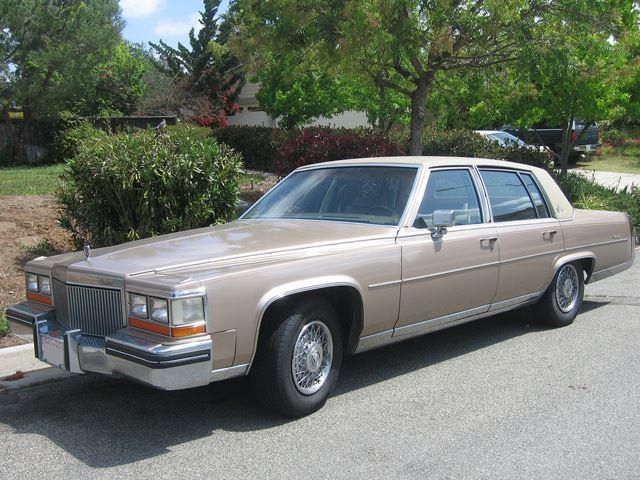
Cylinder deactivation has of course become a recent automotive technology success story. But early attempts were not so successful, and while Cadillac again gets full points for effort, the V8-6-4 was such a miserable failure that it put manufacturers off of the idea of cylinder deactivation for years. Today's systems, although they achieve essentially the same result, are an almost entirely different technology, with completely different mechanical workings.
As the Seventies gave way to the Eighties, the American automotive industry was smack in the middle of what was arguably its darkest period. The energy problems of the Seventies had led to a boom in consumer interest in more fuel efficient cars, followed by CAFE and emissions legislation which further pushed this trend along. Detroit was largely very slow to act on these changes, employing stopgap techniques of saddling giant engines with inefficient an unsophisticated emissions equipment which choked the power out of them. Cadillac's L61 engine, introduced in 1980, was typical of the period.
This was essentially the same as the 425 cu-in and 472 cu-in engines, but was de-bored to bring displacement down to 368 cubic inches and given a hopelessly low-performing throttle body fuel injection system, making for a total of 145 horsepower. The L61 did not raise fuel economy quite as much as had been hoped, and in 1981, Cadillac came up with what was admittedly quite a good solution. With the help of Eaton - a company better known for its superchargers - a cylinder deactivation system was devised for the L61, which would be redubbed the L62 once equipped with this system.
The system would use electrically-operated solenoids to lift the rockers up away from the pushrods, thus preventing the valves from opening on either two or four of the eight cylinders as needed. The result was the improvement of fuel economy without depriving the customer of power when it was needed. This all sounds great, and modern systems show that this was indeed a good idea. But the electronics available for making this whole system work were, in 1981, severely lacking. The main problem with the system was a simple lack of computing power, something that would only begin to take shape years later.
The system monitored input from an array of sensors in order to determine when to switch cylinders on and off, and how many. But the processor had a very difficult time keeping up with quickly changing driving conditions, and the highly annoying result was a system that responded to change just after you needed it. Exacerbating the computing problems was the issue of the fuel injection system. This was a throttle body injection system which was the first form of electronic fuel injection. The system injected fuel into the intake air as it passed through the throttle body on its way into the intake manifold.
This method isn't actually so different from how a carburetor works, the difference being that the throttle body injection system was more precise in its metering of fuel. But it was still a far cry from today's technology, and a lack of communication between the module which controlled it and the one which deactivated the cylinders meant that it was relatively slow to respond to the changing fuel needs of the engine. This meant the engine would briefly over-fuel whenever cylinders were deactivated and would then suddenly lean out when cylinders were reactivated.
Add this to the lateness of the deactivation or reactivation itself, and you can imagine the nightmarish drivability problems these engines produced. Also, because all of the air coming into the intake manifold already had fuel mixed in when it entered, engines that had run for a long time with cylinders deactivated would sometimes get fuel pooling on top of the intake valves, another big problem once they finally opened back up. Today's more powerful electronics and multiport (or direct) fuel injection has basically solved the problems of cylinder deactivation.
More efficient methods have even been employed to prevent valves from opening on newer versions of this technology. But the original system hit a technological wall and hit it hard. Cadillac pulled the system after just a couple of years, and most customers who had bought one of the Fleetwood models equipped with the system would end up getting the dealer to disconnect it, keeping it in V8 mode all of the time.

